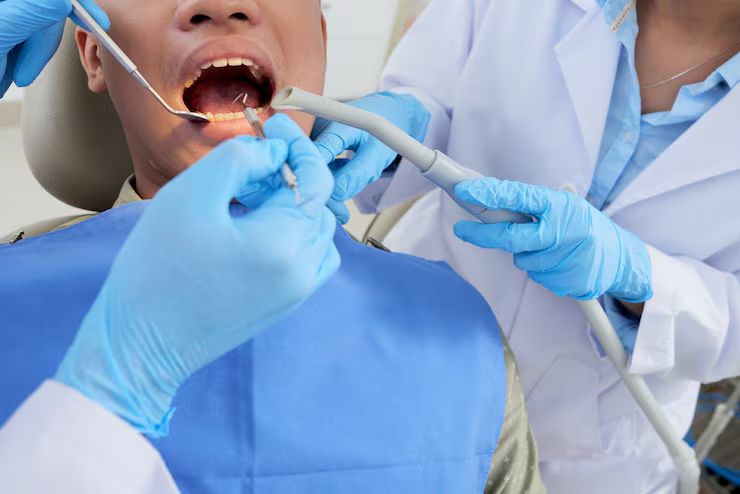
When tooth pain becomes persistent and severe, many people assume that extraction or replacement with dental implants in Sydney is their only option. However, dentistry has advanced significantly, and treatments now focus on preserving natural teeth whenever possible. One of the most effective procedures for saving a tooth that is severely infected or damaged is the extirpation of pulp.
This treatment, often referred to as root canal therapy, removes the infected tissue inside a tooth while maintaining its structure and functionality. For patients who want to avoid losing their natural teeth, extirpation of pulp offers a valuable solution.
The pulp is the innermost part of a tooth. It contains nerves, blood vessels, and connective tissue, which help the tooth grow and remain healthy. However, if the pulp becomes infected or inflamed due to deep decay, cracks, or trauma, it can cause significant pain and may lead to tooth loss if not treated.
Extirpation of pulp involves carefully removing the diseased pulp tissue from inside the tooth. Once the pulp is removed, the empty space is cleaned, disinfected, and filled with a protective material. This process relieves pain, halts infection, and allows the natural tooth to remain in place.

One of the main benefits of extirpation of pulp is that it allows patients to keep their own teeth. Natural teeth function better than artificial replacements, making chewing and speaking easier.
Without treatment, pulp infection can spread to surrounding tissues, leading to abscesses and bone loss. By addressing the issue early with extirpation, patients can avoid extraction and more invasive procedures.
Tooth infections often cause severe, throbbing pain. Extirpation of pulp removes the source of pain while preserving the integrity of the tooth.

A dentist begins with an examination and X-rays to determine the extent of the infection or damage. If the pulp is affected but the tooth can still be saved, extirpation is recommended.
The procedure is performed under local anaesthesia to ensure comfort. The dentist makes a small opening in the tooth to access the pulp chamber.
Using specialised instruments, the infected pulp is carefully removed. This step is crucial to eliminating bacteria and preventing the infection from spreading further.
Once the pulp is removed, the canal is thoroughly cleaned, disinfected, and filled with a material designed to protect the tooth. In most cases, the tooth is later restored with a filling or crown for added strength.
Both extirpation of pulp and dental implants in Sydney are reliable solutions for managing severe dental problems. However, they serve different purposes.
If a tooth is too damaged to be saved, extraction may be necessary. In such cases, a dental implant can replace the missing tooth. Implants provide a permanent solution that looks and functions like a natural tooth, but they require surgery and a longer recovery period.
In many situations, extirpation of pulp is attempted first, as preserving natural teeth is generally the best outcome for patients.
Following the procedure, patients may experience mild discomfort or sensitivity for a few days. Over-the-counter pain relief and avoiding hard foods can help ease recovery.
Maintaining good oral hygiene is essential after extirpation of pulp. Brushing, flossing, and regular dental check-ups ensure the treated tooth remains healthy. A crown may be placed to strengthen the tooth and protect it from further damage.
Most teeth treated with extirpation last many years with proper care. However, regular monitoring by a dentist ensures the tooth continues to function effectively.
Natural teeth provide superior chewing ability compared to artificial replacements. They also help maintain proper jaw alignment.
Keeping natural teeth helps maintain a natural smile without the need for prosthetics.
Extirpation of pulp is often less costly than extraction followed by dental implants. It provides an effective solution for many patients without the need for additional surgery.
Not all teeth can be saved through this procedure. Candidates usually include:
If the tooth structure is too compromised or infection has spread extensively, extraction and implant placement may be the only option.
For patients in Sydney, both options are widely available. Extirpation of pulp is often the first line of treatment, allowing patients to preserve their natural teeth whenever possible. However, if the tooth cannot be saved, dental implants in Sydney provide an effective alternative. Consulting with an experienced dentist ensures the best treatment plan for long-term oral health.
The extirpation of pulp is a valuable dental treatment that helps patients preserve their natural teeth, relieve pain, and prevent further complications. While dental implants in Sydney are an excellent option when teeth cannot be saved, many people benefit from pulp removal as a less invasive, cost-effective, and tooth-preserving solution.
By combining timely treatment, good oral hygiene, and professional aftercare, patients can enjoy the long-term benefits of keeping their natural teeth healthy and functional.